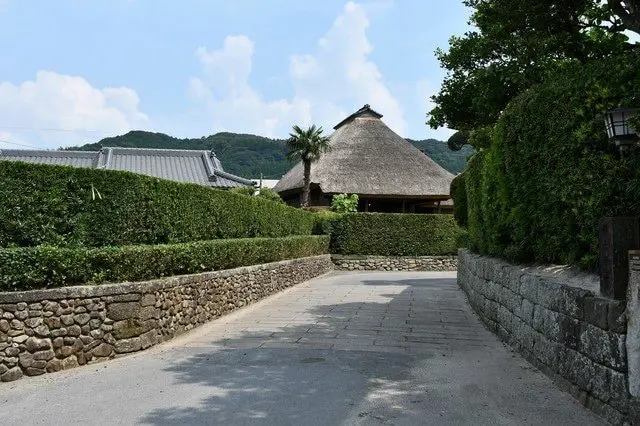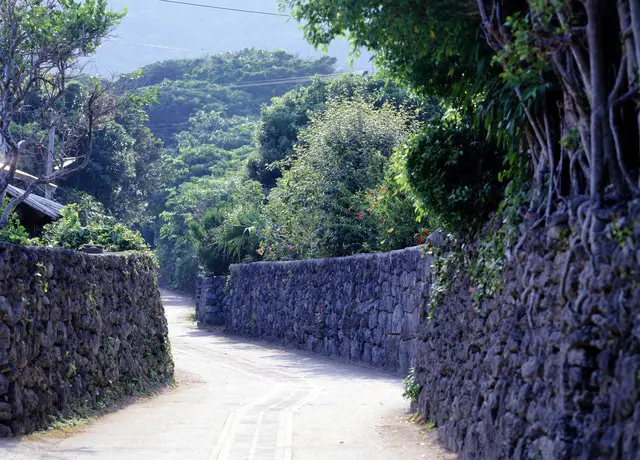Kagoshima Prefecture in Southern Kyushu: Its Nature

This article is about the natural environment of the Kagoshima Prefecture, located in the Southern part of Kyushu, Japan.
The Japanese Islands, divided into 47 prefectures, stretch from north (Hokkaido) to south (Okinawa).
The environment, customs and cuisine of each prefecture is unique, and they all contribute to the Japanese culture.
Kagoshima Prefecture 鹿児島県, located at the southern end of Kyushu, has developed a unique culture, and this article will introduce its natural environment.

Kagoshima: Its Nature and Climate
To understand Kagoshima's unique customs and culture, you have to know some facts about its topography, climate and nature. What does Kagoshima have to offer in terms of natural environment? When is the best season to visit? This article will answer some of those questions.
1. The Third-Ranking Prefecture in Regard to the Number of Active Volcanos

Sakurajima 桜島 is the symbol of Kagoshima, and can be seen from Kagoshima City's central area. It is a active volcano which erupts regularly, and sometimes the volcanic ash comes down.
The word "active live" may scare some people, but there are 5,000 people living on the island of Sakurajima, and many tourists also visit the island.
Of course, sightseeing will be restricted when the volcano is expected to erupt. Even then, there will be information about hazardous areas, so there isn't much to worry about.
By the way, Sakurajima can be reached by ferry from Kagoshima City.
Besides Sakurajima, there are many volcanoes such as Mount Kirishima 霧島山, located at the border between the prefectures of Kagoshima and Miyazaki, and the Kuchinoerabu-jima 口永良部島, an island created by a volcanic eruption.
Due to the number of volcanoes, there are many onsen in this region. Also, special products such as the Sakurajima daikon (Japanese radish) and Sakurajima mikan (a type of mandarines), are grown using the abundant volcanic ash. It wouldn't be an exaggeration to say that the people of Kagoshima are coexisting with these volcanoes.
2. Yakushima: Japan's First Natural Heritage

Yakushima 屋久島 is the second largest island in the prefecure.
Due to its environment and the unique ecosystem, Yakushima has been registered as a UNESCO Natural Heritage site in 1993.
There are various plants on the island, but the most famous plant is the Yaku-sugi cedars.
Cedars are common in Japan, but the Yaku-sugi cedars grow on grounds that are 500 meters above sea level, and the age of some trees are estimated to be over 2,000 years, which makes them a truly rare type of trees.
If you plan to visit Yakushima, the journey should be planned carefully.
From Kagoshima City to Yakushima, it takes four and a half hours by ferry, two hours by a high-speed vessel, and 35 minutes by plane, so the tourists should make plans according to their budgets.
3. A Place Where Three Climate Zones Meet

The Japanese islands, with the exception of Hokkaido and Okinawa, are mainly located in the temperate zone, where the climate is moderate and fit for agriculture.
The largest part of Kagoshima prefecture is in the temperate zone, but some areas belong to a subtropical zone. Yakushima has even a subarctic zone, so there are three climate zones in Kagoshima.
The average temperature in Kagoshima is about 18 degrees Celsius throughout the year. It has a typical tropical climate, with the temperature rising to 30 degrees Celsius in summer. The quantity of precipitation rises from June to August, but it rarely snows in winter.

There are camphor tree forests, bamboo thickets, and mangroves in Kagoshima, all nurtured by the various climate zones.
Sea turtles come to the beach to lay their eggs, and there are also rare creatures, such as the Amami hare, which only exists in the Amami islands. This unique ecosystem, with plants and animals that exist only here, is nurtured by the three climate zones. The natural environment of Kagoshima is protected by the Japanese government.
4. An "Island Prefecture": Over 600 Islands in Kagoshima

Completely surrounded by the ocean, Japan boasts a large number of islands.
Kagoshima consists of 605 islands, ranking second among the prefectures in what the number of islands is concerned.
It is said that about 50 of those islands are actually inhabited. If you have the time, visiting these faraway islands might be fun.
5. Watch Out for the Summer Typhoons!

Kagoshima is located at the southern end of Japan, and frequently raided by typhoons in summer and early autumn. On the other hand, thanks to the warm climate, beautiful cherry blossoms can be enjoyed all over the prefecture in early spring. It is actually in Kagoshima where the sakura bloom first each year.
In winter, the average temperature often rises over 15 degrees Celsius, and it rarely snows. This is also the perfect time to enjoy the onsen.
Kagoshima always offers something to enjoy whenever you visit, but to relish its appeals, we advise tourists to gather information on what to expect and what to watch out for at the time of their visit.
Information
Kagoshima Prefectural Government Office
Address: Kagoshima, Kagoshima City, Kamoikeshinmachi 10-1,
Local Airport: Kagoshima Airport
Access: One hour and thirty minutes flight from the Tokyo Haneda Airport
Telephone:
+81-99-286-2111 (This is the main switchboard number of the prefectural ofiice.)
Official Website:
Kagoshima Prefecture
Kagoshima Travel Guide
All pictures from PIXTA
I'm an University student in Japan, studying Museum studies and Archives etc... 《INTEREST & HOBBIES》 =taking photos/visiting various museums/playing with my lovebird etc...



































![[Coupon Available] Attention Overseas Winter Sports Fans! Nagano's Sports Depot Has Evolved](https://resources.matcha-jp.com/resize/720x2000/2026/01/05-254819.webp)
![[2 hours from Tokyo ] 10 Quiet and Breathtaking Views of Mount Fuji in Yamanashi Hokuto City , Yamanashi - Part 2](https://resources.matcha-jp.com/resize/720x2000/2025/12/16-253037.webp)
